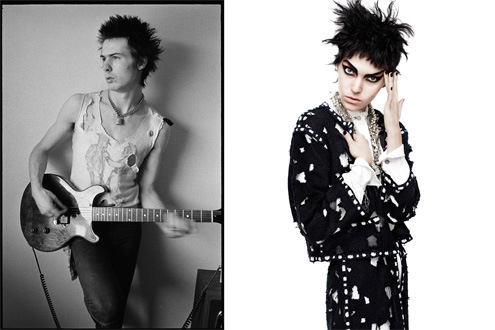Every once in a while f-a-s-h-i-o-n takes itself way too seriously and fails to remember the heart + soul that is the inspiration for its being. There, I have said it.
I wanted to love PUNK: Chaos to Couture at The Costume Institute of The Metropolitan Museum of Art. But when you take the grit out of a movement and distance it from its authenticity, what’s left are derivative pieces which, when standing alone, are lost in the vapor that is a hot flash of fashion.
Sanitizing iconic punk style to what could be a Broadway musical version for the matinée fashion set. Are you for real? Where’s the chaos? Where’s the historical appeal?
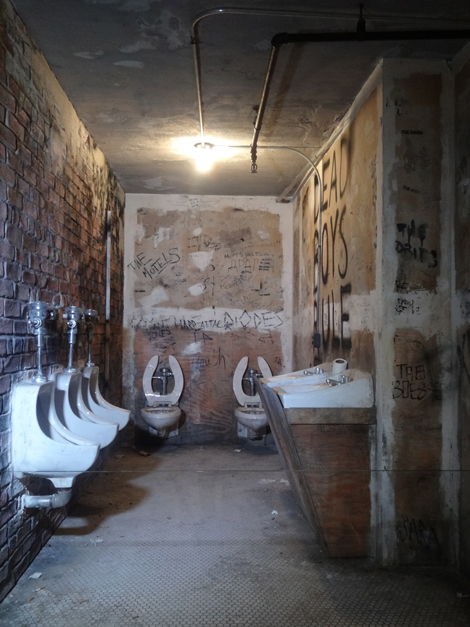
MORE: Costume Exhibitions
For the past few decades, punk style has metamorphosed into a certain edge that can be nuanced in almost everyone’s wardrobe from studs to ripped jeans to motorcycle jackets to intentional jagged hems. That’s what we want to see in department store windows (stroll Bergdorf’s while in NY), but in a museum?
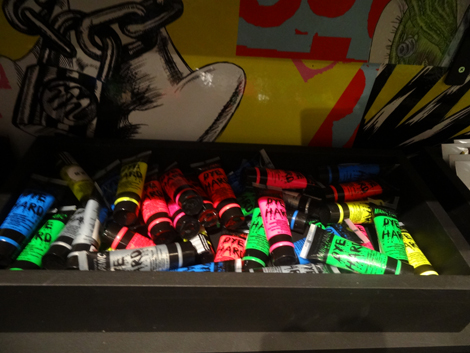
Through the years, I’ve collected a few friends who happen to be punk musicians. I’ve also hung out in those clubs; not so unusual being a New Yorker. Out of school, pre-stylist days I briefly moonlighted as part of a boutique p.r duo with business cards that had our company name (Public Image) and called ourselves Cerise & Chartreuse- we had blue haired musicians as clients and weren’t too keen on what was needed to promote a gig. Fast forward a couple of decades and I live downtown where a Mohawk is more commonplace than an uptown facelift.
RELATED: The Decade That Rocked, Mark Weiss Photographer
Yet at PUNK: Chaos to Couture, I felt punked missing the grit of the street style, the rawness of what made the music movement, the reality of punk that metamorphosed into mainstream and couture fashion today. Oh, yes, there were smatterings of authenticity, like this quote from Johnny Rotten, “Tears,safety pins, tips all over the gaff, third-rate tramp thing, that was poverty really, lack of money. The arse of your pants falls out, you just use safety pins.”
But, where are those clothes represented in the “chaos” of the exhibition? The grainy street photos, club scenes, actual garments… relics of authenticity to the time that show the rawness and the rage before it all became fodder for the commercial couture set?

I called my friend Alan Vega aka Alan Suicide (ironically, our sons met at Gymboree) and a fearless individual whose Suicide song “Ghost Rider” was cleared to play during the Met exhibition. Alan is credited with coining the word “punk” as in the early 70’s he made up flyers inviting people to hear Suicide’s “Punk Music” and to come to the “Punk Music Mass” – that was long before the term was used to refer to a musical / fashion movement sub-culture. Alan remembers seeing a review of the early Stooges written by Lester Bangs who used the term punk but he doesn’t recall the exact reference (he wasn’t describing a genre). He liked the word, which in those days had a different connotation and co-opted it to describe their music. At about the same time, he also described his art as visual punk -dragging garbage & found objects off the street and making it Art.
Alan says, “Punk is punk. it’s an attitude. It wasn’t about if you could afford it. It was about things surviving time, and being appreciated for their wear and re-purposed with a new meaning. They had what we had, and above all, a fierce, no-nonsense attitude. Marty (Rev) & I hoped our clothes would last. He shopped at the Free Market near Houston St, Goodwill or something where he could get things for a dime, a quarter. Bandannas, whatever we could.”
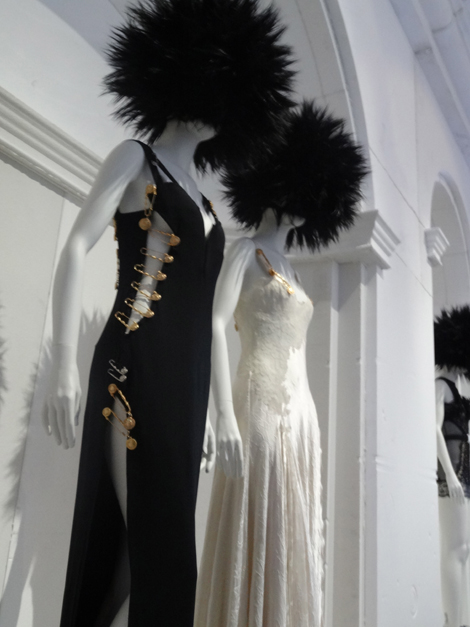
And what destination comes to mind most when recalling punk’s heyday? The East Village’s Trash & Vaudeville, no doubt. “The idea at that time was to find scores, it was what we had, not about style. It fit or it didn’t fit, that was our style because we couldn’t afford anything else. Torn dungarees because they were a way of life.”
And if it’s true punk you wish to uncover, do yourself a favor and do research on the true originals who just barely received a nod at The Met. Go ahead and study the early years of legends like Patti Smith, Malcolm McLaren, Siouxsie Sioux and so many more. And if you’re looking for fashion inspiration look out for World’s End, Body Map, and even Zandra Rhodes (on display).
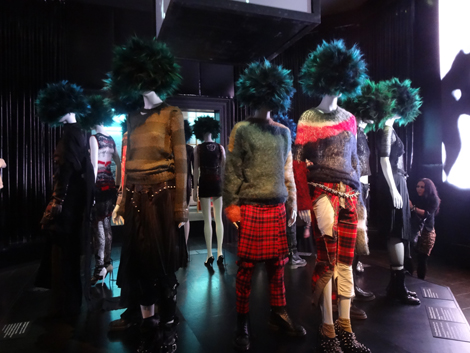
Maybe there is still some anarchy in me as I find the lopsided presence of Calvin Klein and Chanel renditions of punk off-putting without at least one of Patti Smith’s shirts or Joan Jett’s jeans or Wendy O. Williams’ bullet pasty or anybody’s rubber dress on display, as it commercializes a style which derived from rebellion and poverty. Also on display are pieces with more soul from Versace (the gold safety-pin dress that put Elizabeth Hurley on the map), Dolce & Gabbana, Rodarte, Gaereth Pugh Helmet Lang, Martin Margiela, Comme des Garçons, Stephen Sprouse, Katherine Hamnett, and Vivienne Westwood, of course.
At last night’s Met Gala, a few celebrities were able to capture the punk inspiration while other’s just opted for black eyeshadow and random spikes with their gowns. Miley Cyrus in Marc Jacobs pulled off the look in the most organic way. Rooney Mara and Madonna, both in Givenchy, worked the chic and the street inspiration to great delight.
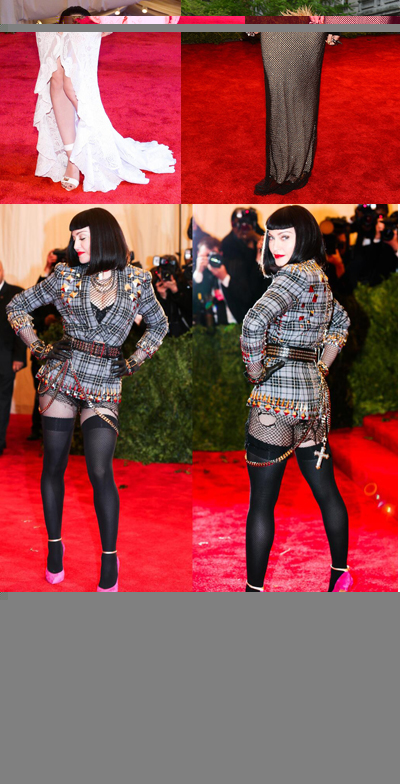
Through time, the edginess of punk has become almost classic as far as a style sensibility goes, whether or not its inherent value as a statement of protest has been lost in translation. If you want to see interesting clothes in a souped up department store display, this exhibition is for you.
What’s your punk moment? Please share in the comments below. –Sharon Haver + Team FocusonStyle
Inside peak at PUNK: Chaos to Couture at The Costume Institute of The Metropolitan Museum of Art:
[nggallery id=252]
In their words…
The exhibition, in the Museum’s second-floor Cantor galleries, will feature approximately 100 designs for men and women. Original punk garments from the mid-1970s will be juxtaposed with recent, directional fashion to illustrate how haute couture and ready-to-wear have borrowed punk’s visual symbols, with paillettes being replaced with safety pins, feathers with razor blades, and bugle beads with studs. Focusing on the relationship between the punk concept of ‘do-it-yourself’ and the couture concept of ‘made-to-measure,’ the exhibition will be organized around the materials, techniques, and embellishments associated with the anti-establishment style. Presented as an immersive multimedia, multisensory experience, the clothes will be animated with period music videos and soundscaping audio techniques.
Organized thematically, each of the seven galleries will have designated punk ‘heroes’ who embody the broader concepts behind the fashions on view. The first gallery will be devoted to CBGB in New York City, represented by Blondie, Richard Hell, The Ramones, and Patti Smith. Next will be a gallery inspired by Malcolm McClaren and Vivienne Westwood and their Seditionaries boutique at 430 King’s Road in London. The Clothes for Heroes gallery, embodied by Jordan, will examine designers who extend the visual language of punk, as it was originally articulated by McLaren and Westwood, by merging social realism with artistic expression.
Do-it-yourself, punk’s enduring contribution to high fashion, will be explored in the four final galleries: D.I.Y. Hardware, focusing on couture’s use of studs, spikes, chains, zippers, padlocks, safety pins, and razor blades, with Sid Vicious as its icon; D.I.Y. Bricolage, highlighting the impact of punk’s ethos of customization on high fashion, including the use of recycled materials from trash and consumer culture, as epitomized by Wayne County; D.I.Y. Graffiti and Agitprop, exploring punk’s tradition of provocation and confrontation through images and text exemplified by The Clash; and D.I.Y. Destroy, examining the effect of punk’s rip-it-to-shreds spirit, typified by Johnny Rotten, via torn and shredded garments associated with deconstructionism.
Designers in the exhibition will include Miguel Adrover, Thom Browne, Christopher Bailey (Burberry), Hussein Chalayan, Francisco Costa (Calvin Klein), Christophe Decarnin (Balmain), Ann Demeulemeester, Dior, Domenico Dolce and Stefano Gabbana (Dolce and Gabbana), John Galliano, Nicolas Ghesquière (Balenciaga), Katharine Hamnett, Viktor Horsting and Rolf Snoeren (Viktor & Rolf), Christopher Kane, Rei Kawakubo (Comme des Garçons), Karl Lagerfeld (Chanel), Helmut Lang, Martin Margiela, Malcolm McLaren, Alexander McQueen, Franco Moschino and Rossella Jardini (Moschino), Kate and Laura Mulleavy (Rodarte), Miuccia Prada, Gareth Pugh, Zandra Rhodes, Hedi Slimane (Saint Laurent), Stephen Sprouse, Jun Takahashi (Undercover), Joseph Thimister, Riccardo Tisci (Givenchy), Gianni Versace, Junya Watanabe, Yohji Yamamoto, and Vivienne Westwood.
The exhibition is organized by Andrew Bolton, Curator, in the Met’s Costume Institute. Photographer Nick Knight is the exhibition’s creative consultant working with exhibition design consultant Sam Gainsbury (who was creative director for the Met’s Alexander McQueen: Savage Beauty exhibition in 2011) and production designer Gideon Ponte (a set and production designer for photo shoots and feature films including Buffalo 66 and American Psycho). All mannequin head treatments and masks will be designed by Guido Palau, who also created treatments for Alexander McQueen: Savage Beauty and last year’s Schiaparelli and Prada: Impossible Conversations.
The design for the 2013 Costume Institute gala benefit will be created by Nick Knight, Sam Gainsbury, and Gideon Ponte with Raul Avila, who has produced the benefit décor since 2007. Additional funding for the gala benefit will be provided by Givenchy.
A book, Punk: Chaos to Couture, by Andrew Bolton, with an introduction by Jon Savage, and prefaces by Richard Hell and John Lydon (a.k.a. Johnny Rotten of the Sex Pistols), will accompany the exhibition. This publication will be illustrated with photographs of vintage punks and high fashion. Published by The Metropolitan Museum of Art, the $45 catalogue (hard cover only) will be distributed worldwide by Yale University Press.
The Museum’s website at www.metmuseum.org/punk will feature the exhibition.
Photos: The Costume Institute of The Metropolitan Museum of Art, @Givenchy, FocusOnStyle

